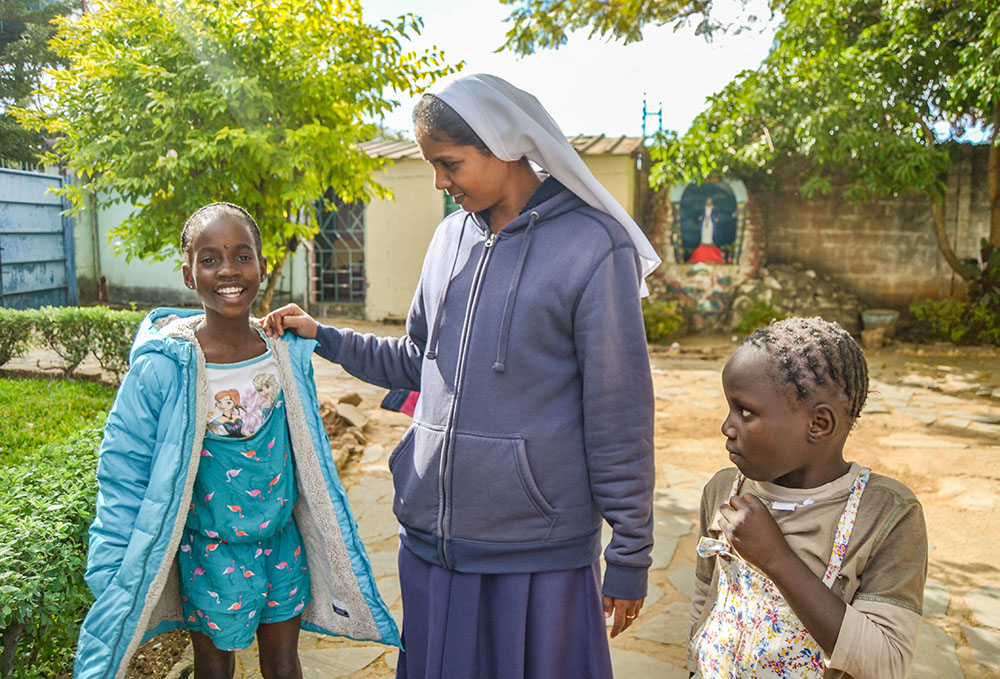
Immaculate Conception Sr. Theresa Kulandai engages the younger girls in conversation at Home of Joy, also known as Nyumba Yanga Orphanage, located on the grounds of the Marian Shrine in Lusaka, Zambia. (Derrick Silimina)
As laughter and singing reverberates through a girls' orphanage in Zambia's capital, Lusaka, the surge in orphans is adding to the hardships of a population already struggling with an economic crisis.
"Not that I am not affected by being a double orphan, but I feel safe and secure being here," Anita Kachinga, a 15-year-old resident of Home of Joy orphanage, told GSR.
Kachinga vividly recalls her depression and anxiety after losing her mother to illness after a stay at Lusaka's Mother Theresa Hospice.
Narrating her ordeal, Kachinga disclosed how she got abused by her mother's relatives, an experience that traumatized her and robbed part of her childhood. "I found myself living on the cold streets of Lusaka until I took refuge at the Home of Joy orphanage."
In 1999, Archbishop Medardo Mazombwe, at the time head of the Lusaka Archdiocese, saw an urgent need to help the vulnerable children found dumped at the Marian Shrine Campus. The Congregation of the Immaculate Conception sisters from India who were in charge of the facility took up the challenge to establish the Home of Joy, also known as Nyumba Yanga Orphanage, on Aug. 7, 2000.
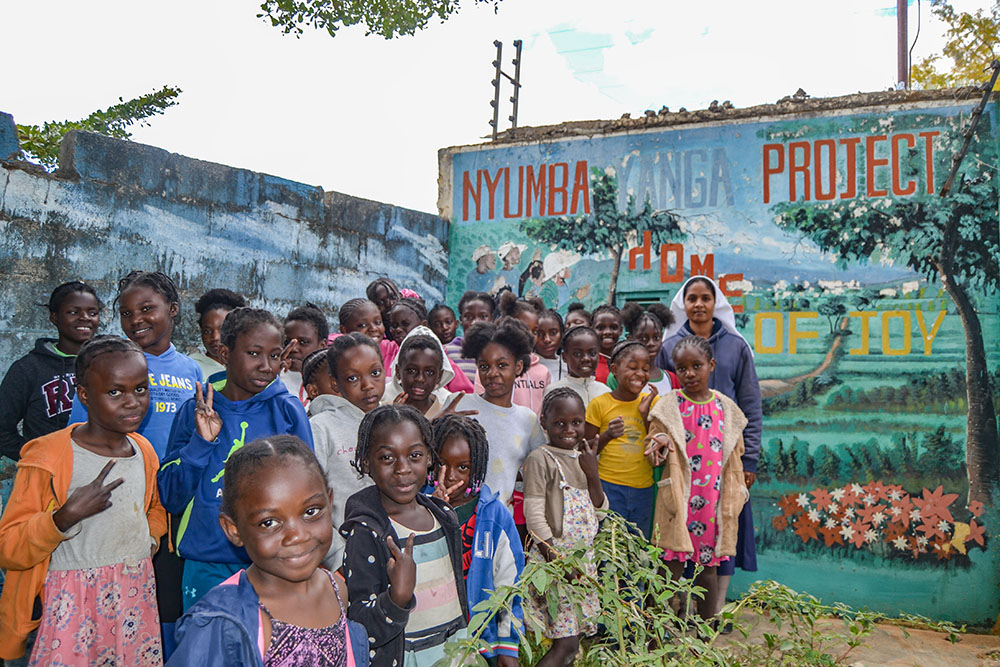
Immaculate Conception Sr. Theresa Kulandai poses for a picture with orphaned girls at Home of Joy, also known as Nyumba Yanga Orphanage, located on the grounds of the Marian Shrine in Lusaka, Zambia. (Derrick Silimina)
In the face of poverty and the untimely death of parents due to HIV/AIDS, among other maladies, nearly one-fifth (18%) of children in Zambia aged 0-14 years are orphans, one of the highest orphan rates in the sub-Saharan Africa region, according to the World Bank.
For this reason, Immaculate Conception Sr. Theresa Kulandai, director of Home of Joy, works to provide education, food, clothing and shelter among others to double-orphaned girls nestled within the Marian Shrine Campus, 15 kilometers east of Lusaka city.
_____
GSR: Tell us about yourself and the work you do.
Kulandai: Initially, I was sent to Zambia as a missionary from India in 2015, after completing my final profession. In 2020, I was moved and assigned at our other foster home called "Future in My Hands" which is based west of Lusaka, where I also helped to teach vulnerable girls at our school, called St. Joseph's Future in My Hands.
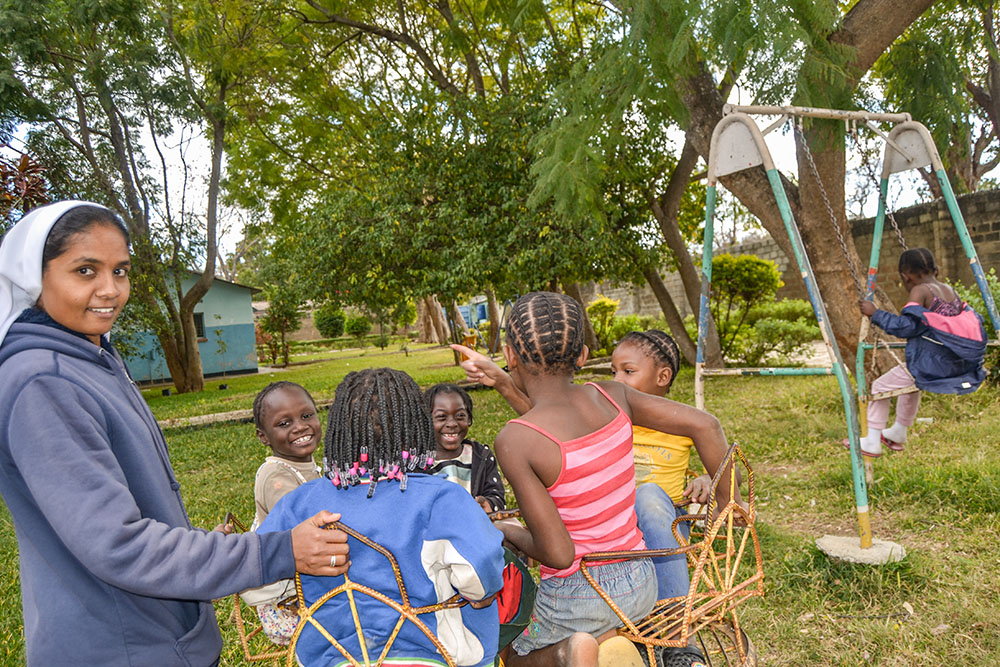
Immaculate Conception Sr. Theresa Kulandai engages the younger girls in conversation at Home of Joy in Lusaka, Zambia. (Derrick Silimina)
Professionally, I studied engineering with a major in electronics and communication back in India. While I was working at the children's home, I pursued a primary teaching career at Kasiya College of Education because of my passion to impart knowledge to the children.
Twenty-four years ago since the orphanage was established, we are still relying on well-wishers to feed, clothe and sponsor the children to school, among other needs, as we currently have no income-generating venture to sustain and manage the home. I am glad that other people, including Catholic Women's League from different parishes, do pitch in to contribute with groceries, clothing and foodstuffs, among others.
What does it take to manage the vulnerable and double-orphaned girls?
Obviously, it is not an easy task to take good care of young orphans from a diverse background, considering their different age differences being put in one place. It takes passion to take care of the orphans who mostly come from hostile environments.
Advertisement
We house a total of 35 girls from 5 to 17 years of age and they all attend school from baby class to grade 7. It is a complex duty to manage both young and older girls in one facility for a long time and this is why we have another home — "Future in My Hands" that was established in 2017 to cater for the matured girls above 18 years.
At Home of Joy, we only keep girls from baby class up to grade 7 and then we transfer at least seven girls every year to [the Future in My Hands home] after they write their junior school examinations in readiness to go to high school, from grade 8-12.
How does your charism line up with your humanitarian work?
Since our congregation's charism is to "help the poor people in simplicity and love," I got touched when I found little ones that are in need of care and love. In fact, after I came to Zambia from India in 2021, and upon seeing the vulnerable children, I really got the desire to offer my life for them and finally it became my passion to carry out this mission.
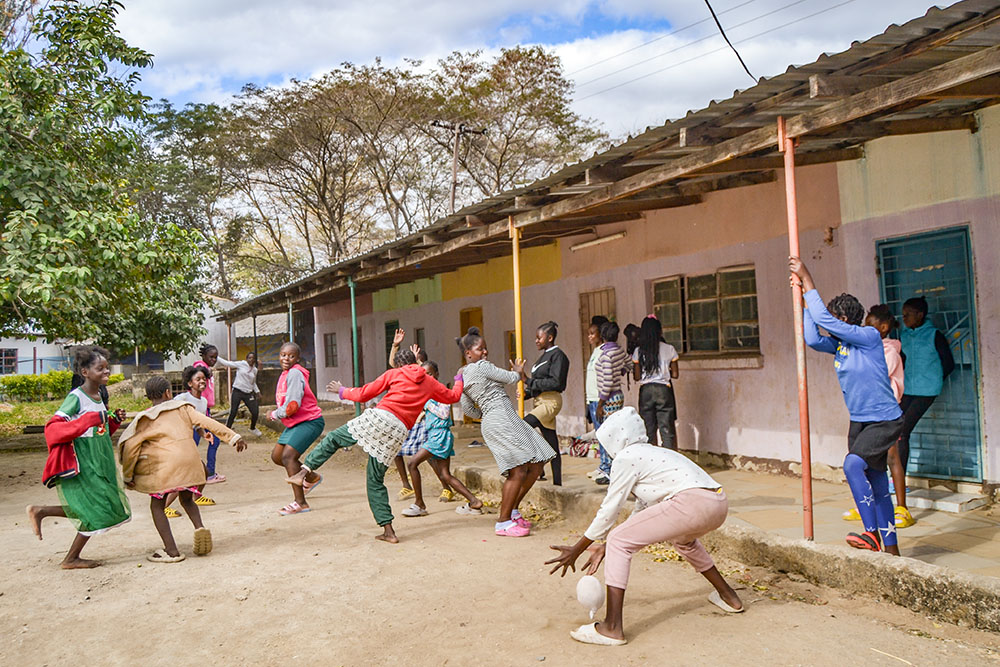
Girls play at Home of Joy, also known as Nyumba Yanga Orphanage, in Lusaka, Zambia. (Derrick Silimina)
Further, we strive for the girls' integration with their relatives, such as uncles, aunties or grandparents, and during school holidays we allow them to familiarize with their extended family members before they get integrated after they graduate from our facilities.
How has your ministry evolved with time?
Since 1994 when our ministry came to Zambia to do pastoral work, there was no specific plan to establish an orphanage. But thereafter, a need arose and we took up the responsibility, since we also run several orphanages and other homes of poor people in India.
For this reason, our ministry is strategically positioned to take up orphaned children, especially from hospices that look after terminally ill and dying parents, especially from the Our Lady's Health Centre, Mother Teresa Hospice and among others, not only from Lusaka but from other towns countrywide where our ministry is serving.
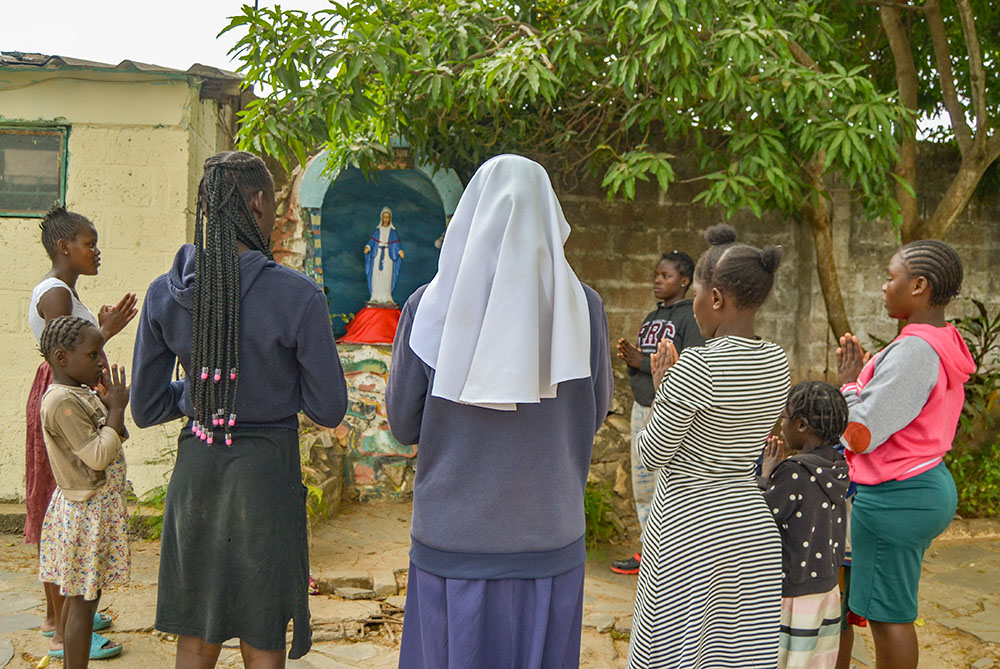
Immaculate Conception Sr. Theresa Kulandai and some orphaned girls gather to recite prayers at the main entrance of Home of Joy in Lusaka, Zambia. (Derrick Silimina)
How many girls have benefited from the orphanage from inception?
So after 24 years of the orphanage's existence, we have supported over 160 girls into higher education. After they graduate, some have gotten married, some come back to work as "mothers" at Home of Joy [where two are now working].
Recently, after a realization of some of the big girls' poor academic performance, especially those that we took to government schools, we decided to establish our own school, St. Joseph's Future in My Hands school to cater for the primary and high school.
I am excited that most of our graduates are now well-established and doing fine in life. Others have pursued their academic journey through other donor sponsorship. Some have done medicine, teaching and engineering, among other careers.
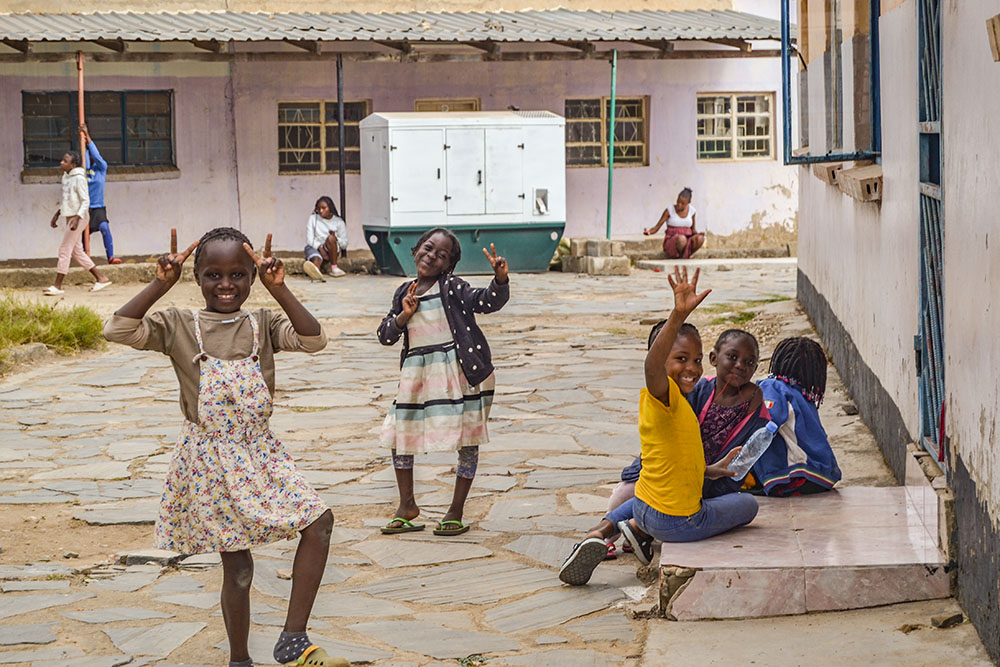
Girls play at Home of Joy, also known as Nyumba Yanga Orphanage, in Lusaka, Zambia. (Derrick Silimina)
What challenges do you face in the daily operations of the orphanage?
It is evident that such an undertaking of managing an orphanage does come with its own prominent challenges each day. Before my current position, I used to be an assistant to my predecessor, but after she left, I had to get used to managing all daily duties seamlessly.
Since the facility is run like a family setup, with each house housing 10 children who are taken care of by a "foster mother," we have four mothers each taking care of around 8-10 girls.
Some of the challenges include lack of transport to ferry girls to and from school, inconsistent donor support, and limited supplies of basic needs to cater for the increasing number of girls annually.







